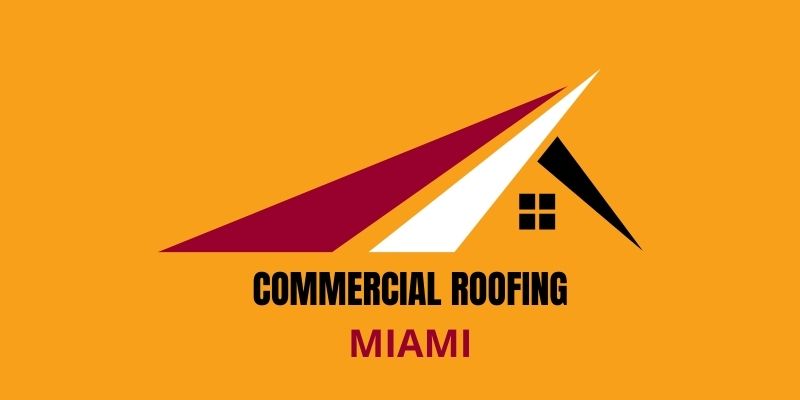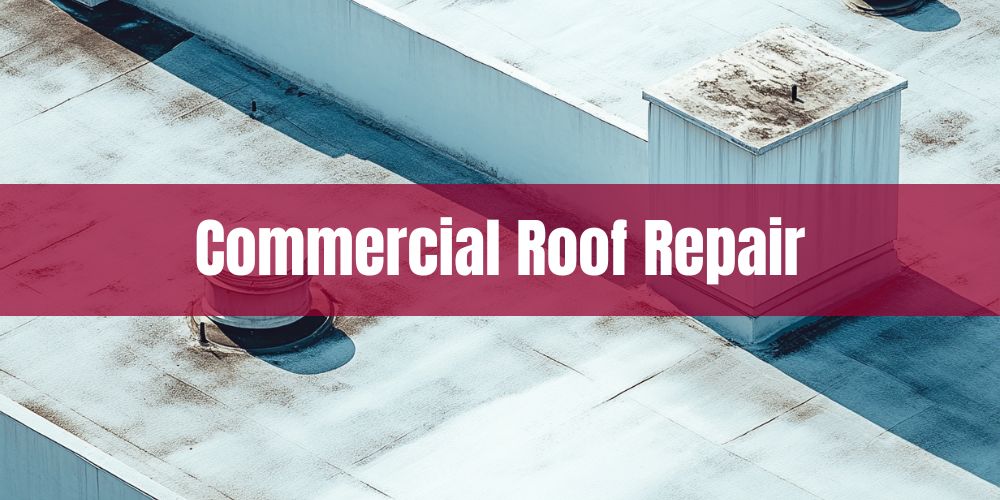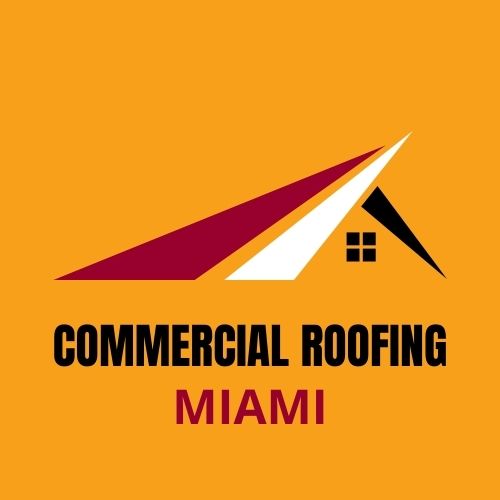Commercial roof repair involves the upkeep, restoration, and fixing of roofing systems on commercial buildings to ensure they remain leak-proof and structurally sound. This service addresses various common issues such as water damage, leaks, and weather-related wear, utilizing materials like TPO, PVC, and EPDM. With a focus on durability and energy efficiency, commercial roof repair aims to extend the lifespan of a building's roof system while maintaining safety and functionality. Regular inspections and timely repairs are crucial to preventing costly damage and ensuring the roof can withstand environmental elements. Commercial Roofing Miami provide commercial roof repair services across the Miami, Florida area.
What Is Commercial Roof Repair?
Commercial roof repair refers to the process of diagnosing and resolving issues affecting the roofing systems of commercial properties. These repairs may include tasks such as sealing membrane punctures, repairing flashing failures, reinforcing seams, or replacing deteriorated sections of the roof assembly. Unlike residential systems, commercial roofs often span large areas and utilize materials that demand specialized handling and tools. Effective repair work begins with a comprehensive inspection to identify both visible damage and latent defects, such as trapped moisture within insulation or compromised drainage. Given the scale and complexity of commercial rooftops, technicians must follow strict safety protocols and use professional-grade equipment. Consistent maintenance and timely repairs help safeguard building assets, minimize operational disruptions, and extend the service life of the roof.
Miami, Florida's warm, humid climate with high precipitation levels necessitates that commercial roof repair solutions address moisture control and heat management effectively. The use of materials suited to withstand intense sunlight and frequent rainstorms, such as reflective coatings and moisture-resistant membranes, is crucial to ensure lasting repairs.
Have a question about an upcoming project?
What Are Common Commercial Roof Repair Issues In Miami?
Miami's commercial roofs often face issues related to water damage, UV exposure, and storm impacts. The city's unique climate and frequent tropical storms can accelerate roofing material degradation, leading to leaks and structural damage. Professional maintenance and timely repairs are crucial to ensuring roof longevity amidst these challenges.
- Tropical Storm Damage: Frequent storms cause significant structural strain and water infiltration issues.
- Water Leaks: Heavy rains and high humidity result in persistent leakage and moisture buildup.
- UV Degradation: Intense sun exposure degrades roof materials and reduces lifespan.
- High Winds: Wind uplift can cause membrane detachment and structural damage.
- Mold Growth: Persistent humidity fosters mold development, compromising roof integrity and indoor air quality.
1. Tropical Storm Damage: Frequent storms cause significant structural strain and water infiltration issues
Tropical Storm Damage refers to the detrimental effects that frequent storms have on commercial roofing systems, leading to physical stress and moisture intrusion that compromise structural integrity and waterproofing capabilities. In Miami, where tropical storms are common, commercial roofs endure excessive wind forces and heavy rainfall that exacerbate the risk of leaks and structural damage. This vulnerability requires proactive maintenance and storm-resistant roofing solutions to safeguard commercial properties from repeated tropical storm exposure. Strengthening roof resilience through reinforced materials, proper drainage systems, and regular inspections can mitigate the adverse effects of storm damage. Utilizing storm-resistant roofing materials that offer superior tensile strength and waterproof seals helps commercial roofs withstand the harsh conditions experienced during tropical storms. Additionally, implementing scheduled roof maintenance prior to the storm season can address potential weaknesses and enhance system longevity.
2. Water Leaks: Heavy rains and high humidity result in persistent leakage and moisture buildup.
Water leaks occur when heavy rains and high humidity penetrate roofing materials, leading to persistent leaks and moisture accumulation that can undermine structural integrity. Water leaks are a frequent commercial roof repair issue in Miami due to its tropical climate, which includes high levels of rainfall and humidity. These conditions exacerbate the vulnerability of commercial roofing systems, causing them to deteriorate faster and potentially lead to significant water damage if not promptly addressed. To counteract water leaks, regular roof inspections and maintenance are crucial in identifying weak points prior to severe weather conditions. Installing proper drainage systems and ensuring that roofing materials are appropriately sealed can further help prevent moisture infiltration. Timely intervention and repair work are essential in maintaining the longevity and effectiveness of commercial roofing in such challenging environmental conditions.
3. UV Degradation: Intense sun exposure degrades roof materials and reduces lifespan
UV degradation is the breakdown of roofing materials caused by prolonged exposure to ultraviolet (UV) radiation, leading to compromised durability and a shorter lifespan. UV degradation is a common issue for commercial roofs in Miami due to the region's intense sunlight and frequent high temperatures. The persistent sun exposure accelerates the aging process of roofing materials, causing them to dry out, crack, and lose their waterproofing capabilities, which can result in costly repairs. To combat this issue, it is advisable to apply a high-quality UV-reflective coating that helps in reflecting harmful rays and minimizing surface temperature. Additionally, scheduling regular roof inspections can prevent minor UV damage from developing into larger problems. Proactive maintenance and the use of sun-protective materials contribute significantly to extending the lifespan and efficiency of commercial roofing systems in sunny climates like Miami.
4. High Winds: Wind uplift can cause membrane detachment and structural damage
High winds refer to strong atmospheric conditions that can lift roofing membranes, leading to their detachment and potential structural damage. High winds are a prevalent roofing issue in Miami due to its frequent tropical storms and hurricane activity. The force of wind uplift can compromise the integrity of commercial roofs by detaching membranes, especially in flat or low-slope roofing systems. To mitigate the effects of wind uplift, it is crucial to ensure roofing materials and installations meet local wind code requirements. Regular inspections after major storms can help identify damage early, allowing for timely repairs that prevent further structural compromise. Additionally, advanced attachment methods and materials designed to withstand high winds can be implemented to enhance the roof's resilience.
5. Mold Growth: Persistent humidity fosters mold development, compromising roof integrity and indoor air quality
Mold growth occurs when excess moisture in the environment creates the ideal conditions for mold spores to germinate and spread, ultimately weakening the roofing structure and negatively impacting indoor air quality. Mold growth is a prevalent issue in commercial roofing, especially in humid climates like Miami's, where persistent moisture can rapidly accelerate mold development. This can lead to the deterioration of roofing materials, undermining the structural integrity of roofs and posing health risks to building occupants due to poor air quality. Regular maintenance and moisture control are crucial for preventing mold-related damage to commercial roofs. Implementing effective drainage systems and ensuring proper ventilation can mitigate the risk of mold infestation. Routine inspections to identify and address leaks or water accumulation can help maintain both the longevity of the roof and the air quality within the building.
How Does Miami's Climate Affect Commercial Roof Durability?
Miami's climate, characterized by humidity, intense sunlight, and hurricanes, significantly impacts commercial roof durability. The persistent high humidity and regular tropical storms can lead to accelerated wear and potential damage. Moreover, prolonged UV exposure from intense sunlight can degrade roofing materials, while hurricane-force winds challenge the structural integrity of roofs.
- Humidity Impact: Consistent high humidity levels promote mold growth and material degradation.
- UV Exposure: Intense sunlight leads to fading and material breakdown over time.
- Hurricane Winds: Strong winds during storms can cause structural damage and uplift roofing materials.
- Heavy Rainfall: Frequent heavy rainfall leads to water pooling and potential leakage issues.
- Salt Air Corrosion: Proximity to saltwater causes metal components to corrode faster.
1. Humidity Impact: Consistent high humidity levels promote mold growth and material degradation.
Humidity impact refers to the detrimental effects of persistent moisture on roofing materials, leading to mold proliferation and accelerated deterioration. Miami’s tropical climate, characterized by high humidity, poses challenges for commercial roofs as the moisture facilitates mold growth and material breakdown. This constant exposure weakens roofing systems by eroding their structural integrity and compromising their effectiveness over time. To mitigate these effects, it's essential to use materials that resist moisture absorption and incorporate proper ventilation in the design to reduce humidity levels. Regular inspections and maintenance are crucial to identify and rectify any moisture-related issues before they escalate. Employing roofing membranes with anti-fungal properties can further prevent mold growth, extending the roof's service life in humid environments like Miami's.
2. UV Exposure: Intense sunlight leads to fading and material breakdown over time.
UV exposure refers to the continuous impact of ultraviolet radiation on roofing materials, resulting in their gradual fading, deterioration, and potential failure. Miami's climate, characterized by intense and prolonged sunlight, exacerbates UV exposure, which accelerates the wear and tear of commercial roofing materials. This consistent exposure leads to the weakening of roof membranes, eventually decreasing their lifespan and performance. To combat the effects of UV exposure, applying reflective coatings or installing UV-resistant roofing materials can help mitigate damage. Implementing regular maintenance checks can also identify early signs of UV-related wear, allowing for timely interventions to extend the roof's life. Addressing these concerns promptly not only improves the roof’s durability but also maintains its effectiveness in protecting the underlying structure.
3. Hurricane Winds: Strong winds during storms can cause structural damage and uplift roofing materials.
Hurricane winds refer to the high-speed, intense air movements associated with tropical storms that can damage commercial roofing structures and dislodge their components. The durability of commercial roofs in Miami is significantly impacted by the city's exposure to hurricane winds, which can compromise roof integrity due to frequent and severe storms. As a result, commercial buildings must use wind-resistant roofing materials to withstand these aggressive weather conditions, ensuring long-term safety and reliability. Selecting roofing materials designed to endure high wind pressures is crucial for Miami's commercial buildings to minimize storm-related damage. Implementing additional safety measures, such as reinforced roof edges and secure fastenings, can further protect roofing systems against hurricane force winds. Routine inspections and maintenance are also necessary to address vulnerabilities and promptly repair damages before they escalate during hurricane events.
4. Heavy Rainfall: Frequent heavy rainfall leads to water pooling and potential leakage issues
Heavy rainfall refers to the accumulation of large amounts of rainwater in a short period, which can result in water collecting on flat surfaces and increasing the risk of leaks in commercial roofing. Miami's tropical climate often experiences heavy rainfall events that can strain commercial roofs, particularly flat roofing systems that are prone to water pooling. Constant exposure to such rainfall can exacerbate potential leakage issues, weakening the roofing structure and increasing maintenance needs. Proactively implementing effective drainage solutions like sloped insulation or an adequate number of drains can mitigate these risks by ensuring that rainwater is efficiently removed. Regular inspections following heavy rain periods are essential to identify early signs of pooling or leakage, allowing for timely interventions. Proper water management not only prolongs the lifespan of the roof but also contributes to building safety and structural integrity in Miami's challenging climate.
5. Salt Air Corrosion: Proximity to saltwater causes metal components to corrode faster
Salt air corrosion is the accelerated deterioration of metal roofing components because of exposure to salt-laden air and humidity, leading to rust and material degradation. Proximity to saltwater bodies like those near Miami significantly increases the risk of salt air corrosion on commercial roofs, reducing their durability. This environmental factor necessitates specialized roofing materials or coatings that can withstand corrosion to ensure long-term roof performance. Regular inspections and maintenance of commercial roofs in coastal regions are crucial to identify early signs of corrosion and prevent extensive damage. Using corrosion-resistant materials such as stainless steel or protective coatings can help mitigate the impact of salt air. Implementing these strategies can ultimately extend the lifespan of the roofing system and maintain its structural integrity in harsh coastal environments.
Which Materials Are Best For Commercial Roof Repairs In Miami?
For commercial roof repairs in Miami, TPO roofing membranes are often the best choice. Miami's climate, characterized by intense sun and heavy rainfall, requires materials that offer UV resistance and thermal efficiency. Additionally, it's crucial to consider waterproofing and the material's ability to withstand high winds.
- Weather Resistance: Effectively withstands Miami's heavy rain and high humidity.
- UV Resistance: Protects against intense sunlight, reducing degradation over time.
- Energy Efficiency: Reflects sunlight to keep commercial spaces cooler and reduce energy costs.
- Wind Resistance: Can endure high-speed winds common in Miami's hurricane-prone environment.
- Waterproofing: Prevents leakage and water damage during tropical storms and heavy rains.
1. Weather Resistance: Effectively withstands Miami's heavy rain and high humidity.
Weather resistance is the ability of a roofing material to provide durable protection against adverse weather conditions, such as heavy rainfall and high humidity, which are prevalent in Miami. The ability of a roofing system to resist weather-related challenges is crucial for commercial properties in Miami, where heavy rains and high humidity can lead to water damage and mold growth if the roof is not robust. Selecting materials like thermoplastic polyolefin (TPO) or modified bitumen is vital because these materials offer superior waterproofing capabilities and resistance to moisture infiltration. Employing roofing systems designed to withstand Miami’s climate helps ensure long-term performance and minimizes the risk of costly damages and repairs. Regular roof inspections and maintenance further enhance the resilience of the roofing, providing dependable protection against the elements. By investing in such durable roofing solutions, businesses can safeguard their assets from the frequent storms and high humidity typical of the region.
2. UV Resistance: Protects against intense sunlight, reducing degradation over time
UV resistance is the capacity of commercial roofing materials to withstand the effects of prolonged exposure to sunlight, which helps in maintaining the roof's durability and longevity. UV resistance is crucial for commercial roofing in Miami, a region known for its intense sunlight and high UV index. A roof with strong UV-resistant properties can significantly slow down the degradation process caused by constant sun exposure, thereby reducing maintenance costs and extending the roof's functional lifespan. Materials such as TPO (Thermoplastic Olefin) and EPDM (Ethylene Propylene Diene Monomer) are often recommended for Miami's climate due to their inherent UV-resistance and reflective properties. These materials can prevent thermal expansion and contraction, which often leads to leaks and structural damage over time. Applying reflective coatings on existing roofs can further enhance UV protection, ensuring that the roof's performance remains optimal in harsh sunlight conditions. Regular inspections and maintenance can also help maximize these benefits by catching any early signs of wear and ensuring that protective measures remain effective.
3. Energy Efficiency: Reflects sunlight to keep commercial spaces cooler and reduce energy costs
Energy efficiency is the ability of a roofing material or system to reduce energy consumption, such as cooling costs, by reflecting rather than absorbing heat. The high energy efficiency of certain roofing materials, including modified bitumen, makes them an excellent choice for commercial roof repairs in Miami. These materials reduce the need for air conditioning by reflecting the sun's rays, which is crucial for managing energy costs in Miami's hot climate. Investing in energy-efficient roofing systems not only helps lower energy bills but also contributes to sustainability efforts. By reducing the urban heat island effect, these systems play a part in creating more environmentally friendly urban environments. Opting for reflective roofing solutions ensures commercial buildings remain cooler, further reducing operational expenses related to high heat mitigation strategies.
4. Wind Resistance: Can endure high-speed winds common in Miami's hurricane-prone environment.
Wind resistance refers to the ability of a roofing system to withstand high-speed winds, such as those experienced during hurricanes, without sustaining significant damage. In hurricane-prone areas like Miami, choosing roofing materials with high wind resistance is crucial for maintaining structural integrity and ensuring long-term protection. Roofs that can endure such conditions minimize the risk of damage from high winds, reducing the need for frequent repairs and replacements. Commercial roofing systems that offer superior wind resistance often incorporate specialized fastening methods and durable materials designed to handle extreme weather events. Regular inspections and maintenance are essential to ensure that the roof remains in optimal condition, particularly following major storms. The use of wind-rated materials helps in lowering insurance premiums and provides peace of mind for property owners in vulnerable regions.
5. Waterproofing: Prevents leakage and water damage during tropical storms and heavy rains
Waterproofing involves the use of specialized materials and systems designed to seal a building's roof, creating a barrier that stops water from penetrating and causing damage. Waterproofing is critical for commercial roofs in Miami due to the area's exposure to frequent tropical storms and intense rainfall, which can lead to significant water damage if the roof is not properly sealed. Using durable waterproofing solutions ensures that commercial buildings avoid costly repairs and maintain structural integrity through such weather events. When choosing materials for commercial roof repairs, particularly in storm-prone areas like Miami, it is crucial to consider options known for their superior waterproofing capabilities. Regular inspections and maintenance of the waterproofing systems are vital to address any weak spots early and reinforce barriers before the onset of harsh weather conditions. Investing in high-quality waterproofing materials not only extends the life of the roof but also provides peace of mind by minimizing the risks associated with water intrusion.


